June 28, 2023
Risotto: Understanding the Basics
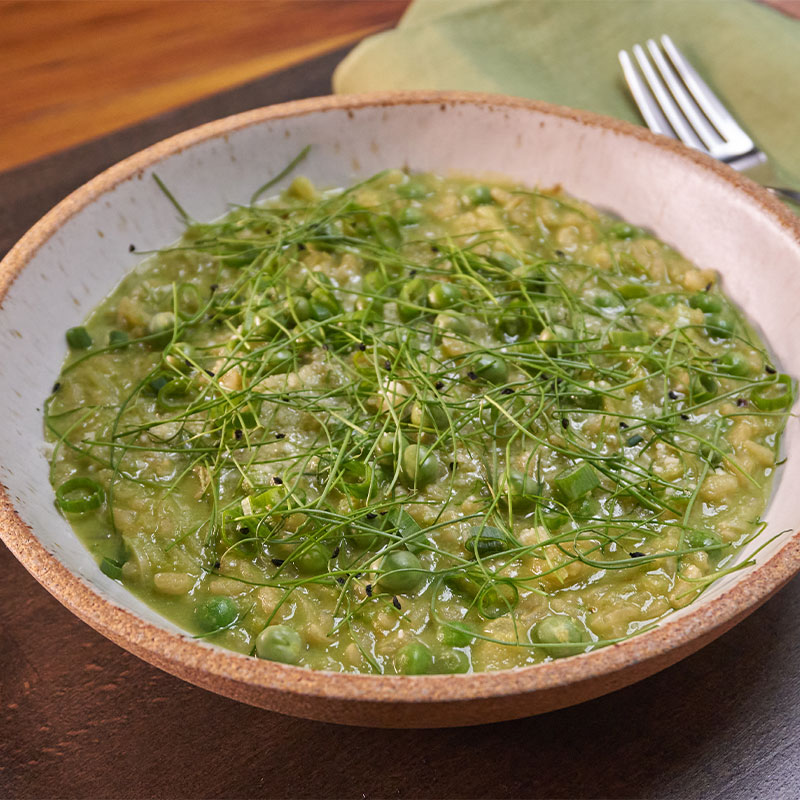
Risotto is one of the most popular dishes on menus across the country. Originally hailing from Lombardy, Italy, this dish is now internationally known. It is available for breakfast, lunch, and dinner, as a standalone entrée or as a side. It can be completely vegetarian or made with red meat or seafood, and it is not limited to just Italian restaurants!
So how do you make it at home? You’ve probably heard risotto needs to be stirred a lot but don’t fear, we promise it’s easy to make and doesn’t require any fancy cooking equipment! In this blog post, we’ll share our tips and tricks for making the best risotto at home.
What is risotto?
Risotto is a widely popular Italian rice dish consisting of a base of rice and stock stirred to reach a creamy consistency. Butter, saffron, and parmesan are some of the ingredients most often combined with the base to make a variety of flavorful risottos. It’s creamy, comforting, and very customizable. With minimal ingredients required, the focus here is on the proper cooking of this rice dish.
What rice do I use?
The top rice choice for risotto is Arborio due to its distinctive core, called the pearl, that remains just slightly firm when cooked. If Arborio is not an option, any white medium grain rice will work and provides the necessary high levels of the amylopectin starch that absorbs flavor and takes on the desired creamy texture when cooked properly.
What cooking equipment do I need?
A heavy pan with a thick bottom and sides helps distribute heat evenly. Make sure it is large enough to hold the cooked rice (rice will expand to about three times its original size).
What is the cooking process for risotto?.jpeg?sfvrsn=6f04a98d_4&MaxWidth=300&MaxHeight=340&ScaleUp=false&Quality=High&Method=ResizeFitToAreaArguments&Signature=FF28AE01A03C85DEBEC7595F7613D4FA69F29FA6)
Sauté rice in butter or oil to create a shell around each grain. This allows the grain to slowly absorb moisture, resulting in a creamy texture, yet each grain maintains its shape.
After rice has been properly sautéed, it is time to add your choice of broth. Broth should be at a simmer when added to the rice. Warm broth keeps the temperature at a more constant level, ensuring even, continuous cooking, while releasing the rice's starch and making it creamy.
Broth should be added one cup at a time, allowing for it to be fully absorbed before adding more. It's the gradual addition of broth along with slow cooking that helps produce the creamy consistency unique to risotto.
Risotto should continue to simmer during cooking. Adjust heat if necessary. If the heat is too high, the broth will evaporate; if too low, it will not be absorbed by the rice..jpeg?sfvrsn=6e04a98d_4&MaxWidth=300&MaxHeight=340&ScaleUp=false&Quality=High&Method=ResizeFitToAreaArguments&Signature=986E4DBEBC22738C71DC8AD75DDFAA250B7731FD)
Time to stir! Risotto should be stirred often. Stirring keeps the grains in contact with the liquid for even cooking, prevents the rice from sticking to the bottom of the pan, and dislodges surface starch from the rice into the liquid, causing it to thicken.
How do I know when Risotto is done cooking?
Risotto is done when the rice is al dente, meaning it is creamy, yet firm in the center. Never let rice dry out when making risotto. For a creamy texture, the rice should always, from start to finish, be kept under a "veil" of broth.
Risotto Tips
- Do not rinse the rice. Rinsing removes starch, which is what gives risotto its wonderful creamy consistency.
- If you plan to add wine to your risotto, do so before adding the broth. This helps burn off the alcohol, leaving only the wine's more subtle flavor. A simple, dry white wine works best.
- For best results use homemade broth (stock). During cooking, the broth will reduce, intensifying its flavors and those of any added seasonings, especially salt. Canned broth flavor can be improved by simmering 30 minutes with onion, celery, carrot, parsley, and garlic. Strain before adding to risotto.
- An often-overlooked part of the risotto process is choosing whether to sauté with oil or butter. This depends on preference and ingredients being used. Oil works particularly well for seafood risottos, while butter is better for vegetable-based risottos.
- Over-stirring. Don’t stress about constantly stirring as it can ruin the dish’s texture. Stick to stirring once every 30 seconds and trust the cooking process to do the rest. At the right cooking temperature, the rice will continue to move on its own, so you only need to stir to make sure the rice doesn’t stick to the bottom of the pot.
- Overcooking. For the most part, risotto shouldn’t take more than 20 minutes on the stove to reach the ideal al dente texture that is slightly firm in the center. Overcooking the risotto is a sure way to ruin the dish.
- Cook at a medium simmer throughout the process.
- Cook vegetables separately before adding them into the dish.
- Don’t add cheese too early. Wait until the rice is finished to add in your cheese so you build on the creamy texture.
-
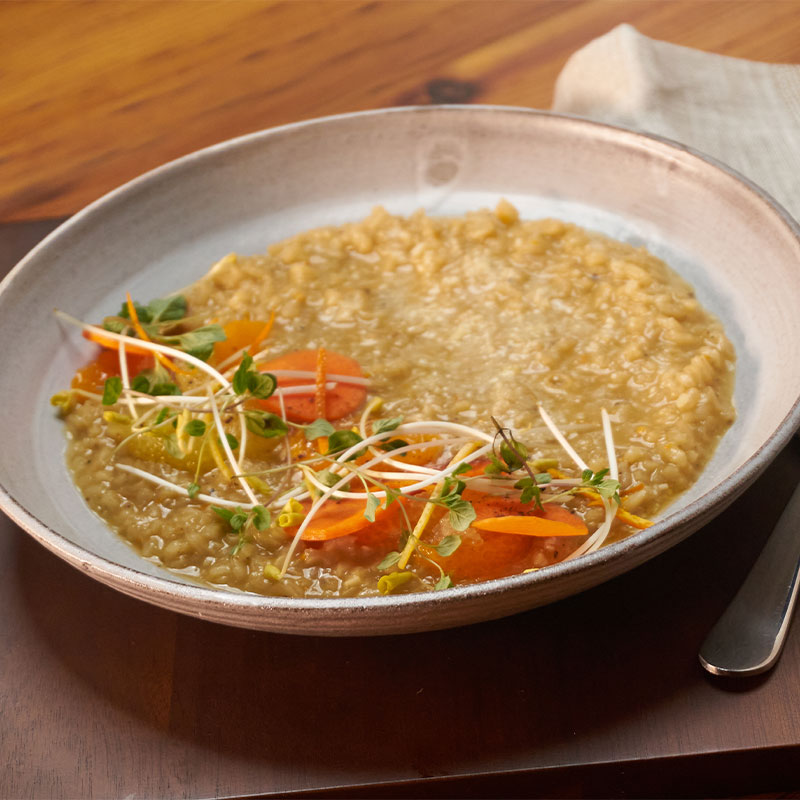
Winter Citrus Risotto
-

Pumpkin Risotto with Bacon, Gouda, and Sage
-
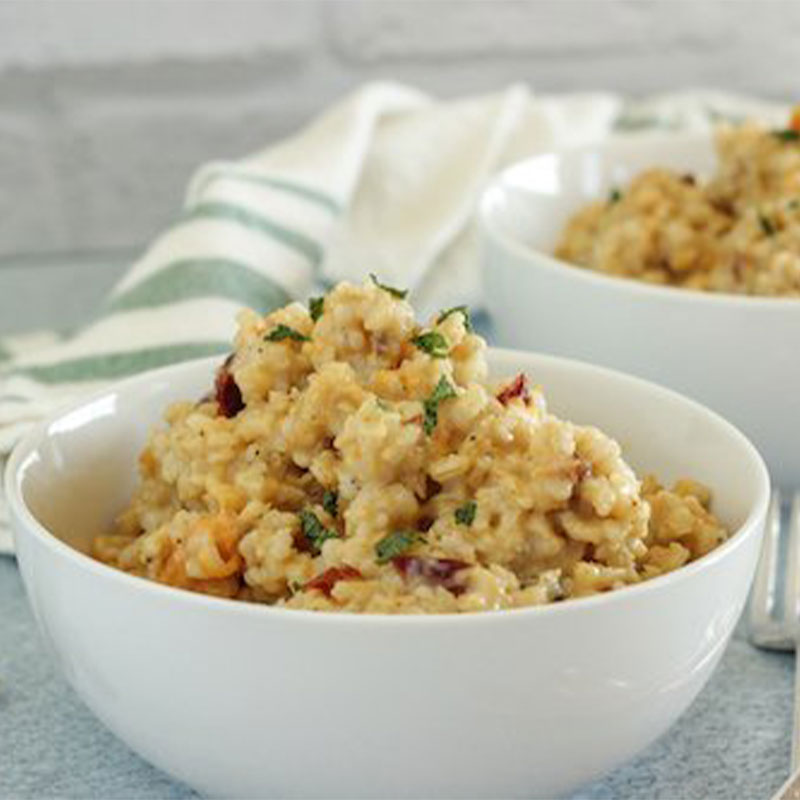
Butternut Squash and Brown Rice Risotto
-
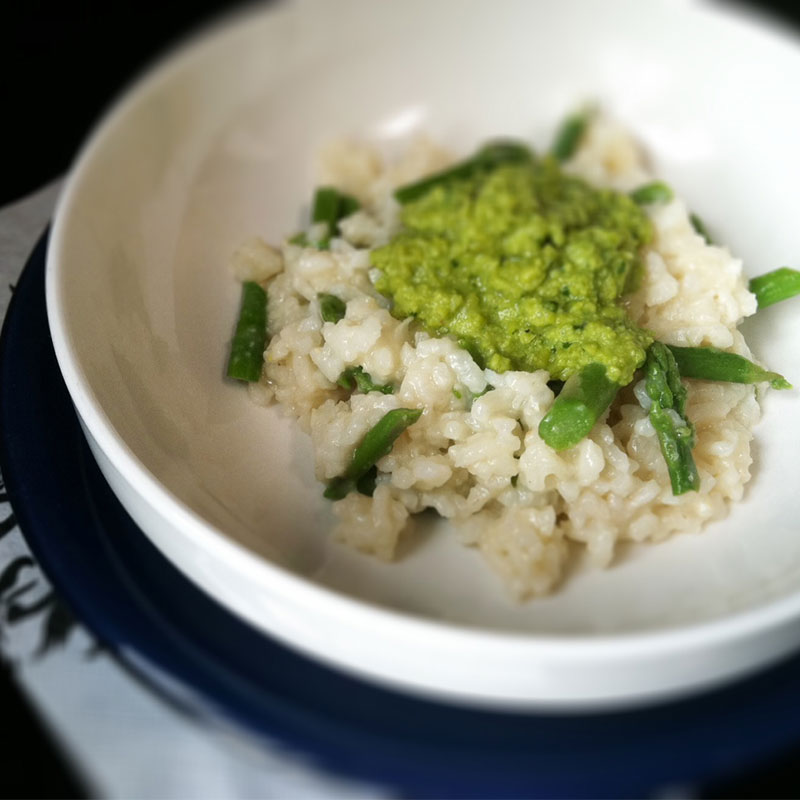
Asparagus Risotto with Spring Pea Pesto
-

Butter Poached Lobster Risotto
-
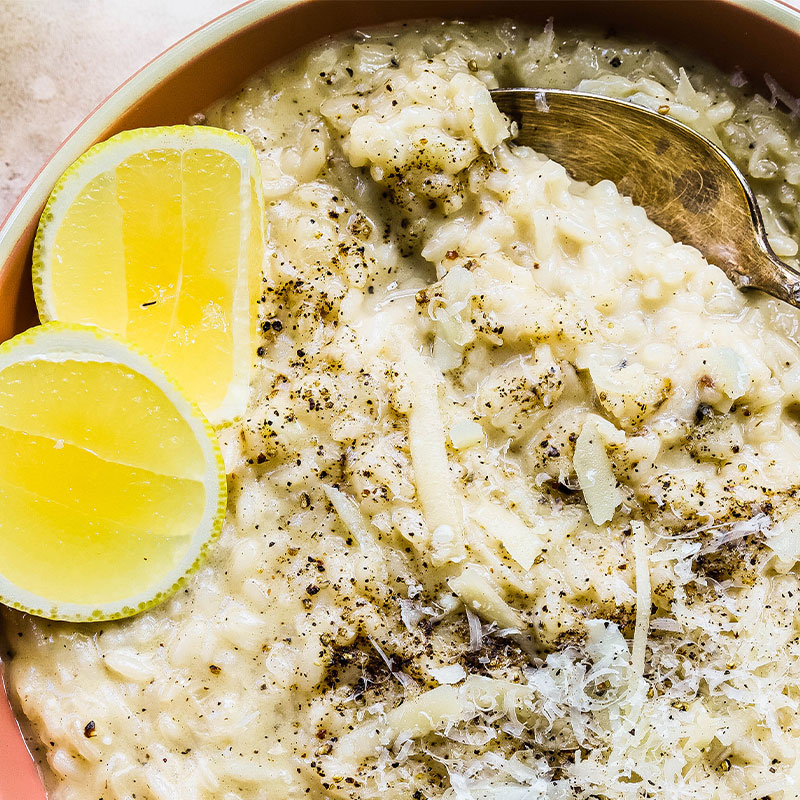
Cacio e Pepe Risotto
